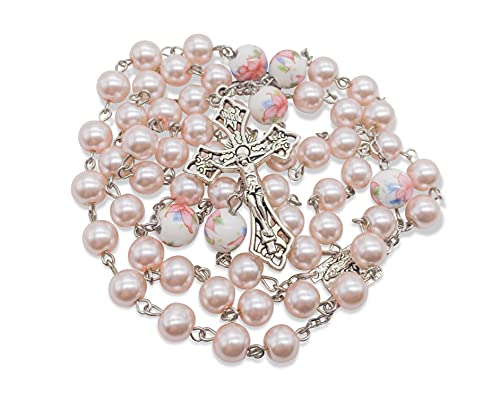The Origins of the Rosary
The history of the rosary dates back thousands of years, with roots in various religious traditions and practices. The word “rosary” comes from the Latin word “rosarium,” which means “rose garden.” This term was used to describe a collection of prayers or devotional acts that were inspired by the Virgin Mary. The rosary as we know it today, however, has its origins in the Catholic Church.
The Early Development of the Rosary
The exact origins of the rosary are not known, but its development can be traced back to the early medieval period. During this time, monks and nuns would recite the Psalms, a collection of religious poems and chants. These Psalms were often recited using beads or pebbles, which were counted as prayers were said.
Over time, the repetition of prayers became an important part of Catholic devotional practice. This led to the development of new prayers and collections of prayers, such as the Hail Mary. The Hail Mary is a prayer that consists of verses from the Bible and a petition to the Virgin Mary. It is recited multiple times during the recitation of the rosary.
The Spread of the Rosary
The popularity of the rosary grew in the 13th century, thanks in large part to the efforts of Saint Dominic. Saint Dominic was a Spanish priest who founded the Dominican Order, a religious order dedicated to preaching and teaching. Saint Dominic believed that the rosary was a powerful tool for promoting devotion to the Virgin Mary and spreading the Gospel.
Saint Dominic and his followers promoted the recitation of the rosary as a way to combat heresy and strengthen the faith of the faithful. They preached the rosary wherever they went and encouraged others to adopt the practice. The Dominican Order became closely associated with the rosary, and it became an integral part of their religious life.
The Rosary in Modern Times
In the centuries that followed, the rosary continued to evolve and adapt to the needs of the faithful. Different forms of the rosary emerged, such as the Franciscan Crown, the Servite Rosary, and the Brigittine Rosary. Each of these variations had its own set of prayers and meditations, but they all shared the common goal of promoting devotion to the Virgin Mary.
In recent times, there has been a renewed interest in the rosary, both within the Catholic Church and beyond. Many people find comfort and solace in the repetition of prayers and the contemplation of the mysteries of the rosary. It is seen as a powerful tool for meditation and reflection, as well as a way to unite with others in prayer.
The Rosary in Other Religions
While the rosary is most closely associated with the Catholic Church, similar forms of prayer beads can be found in other religious traditions as well. In the Eastern Orthodox Church, for example, believers use prayer ropes or knotted strings to aid in their prayers. The Islamic tradition also has a similar practice called “tasbih,” in which believers use beads to recite the 99 names of Allah.
Overall, the history of the rosary is a rich and diverse one that spans centuries and crosses religious boundaries. It has evolved and adapted over time, but its core purpose remains the same – to promote devotion to a higher power and to provide a framework for prayer and meditation.






